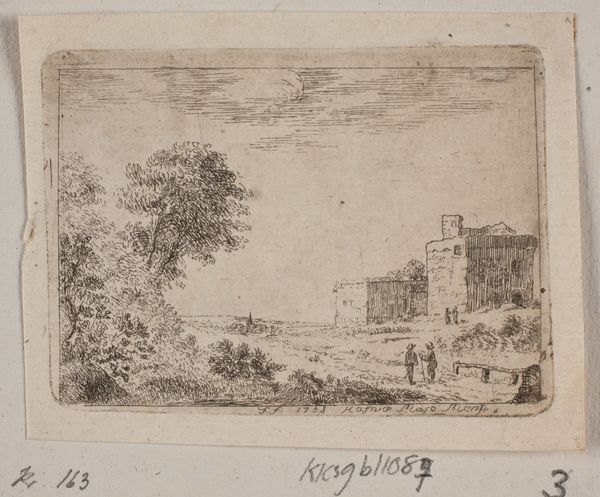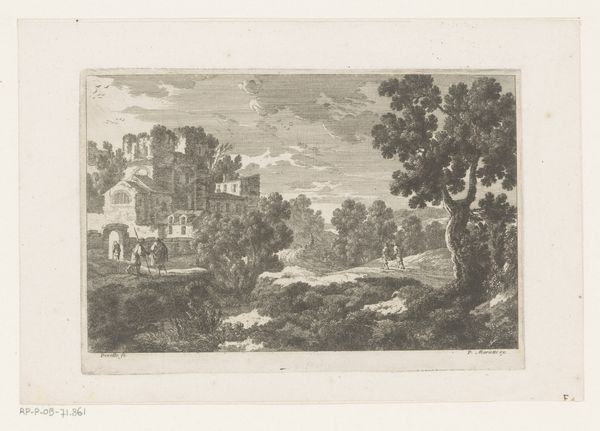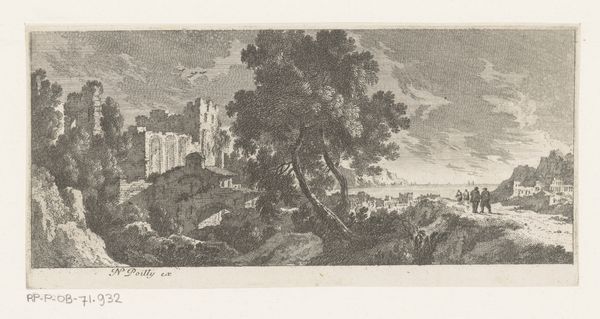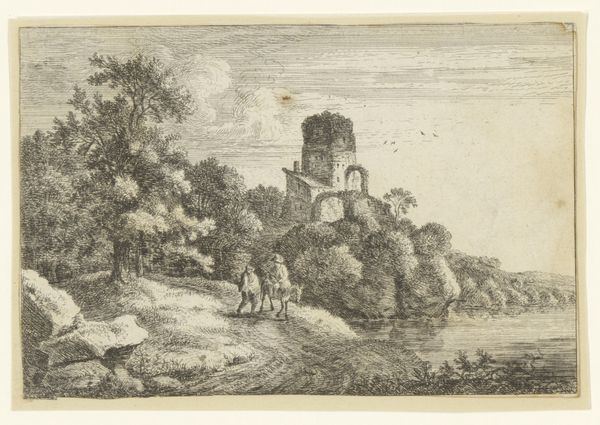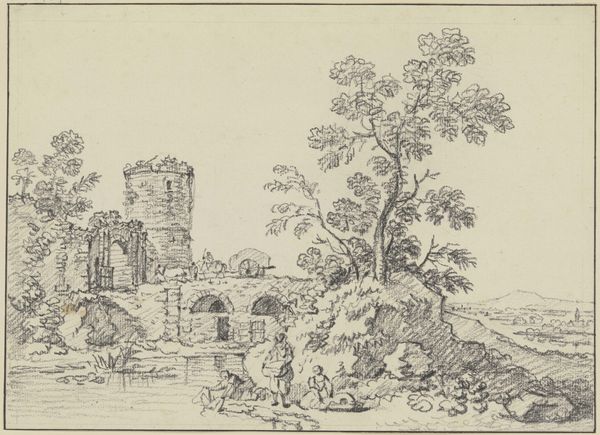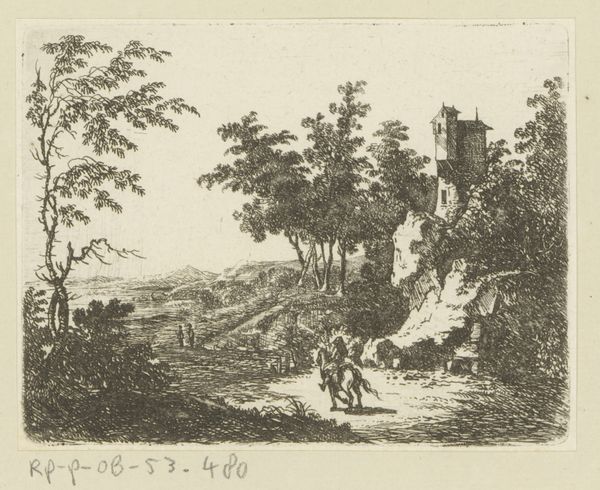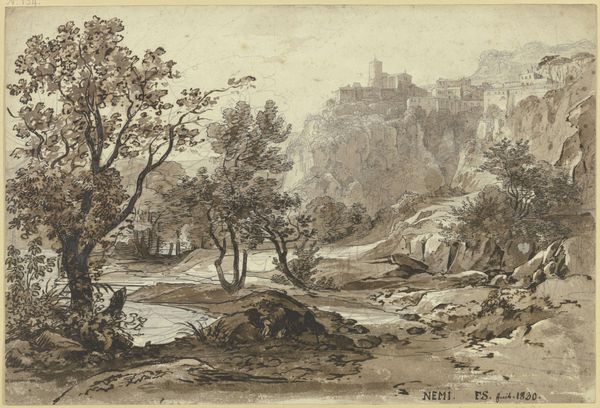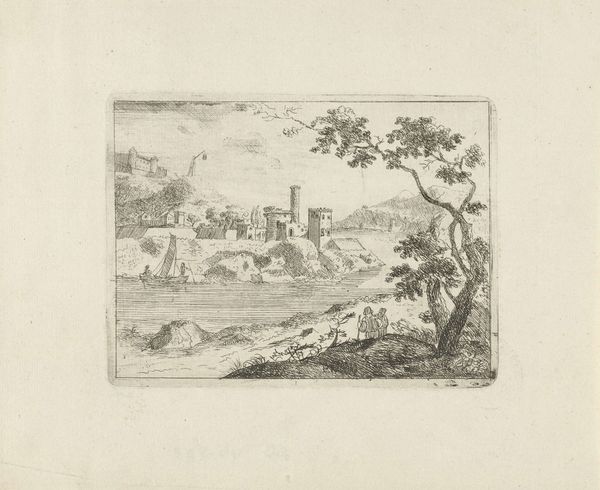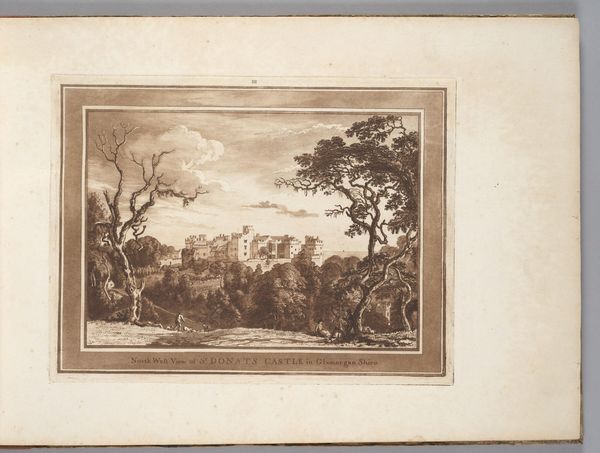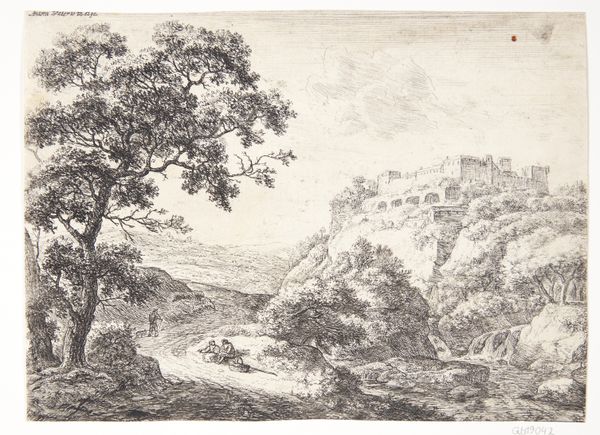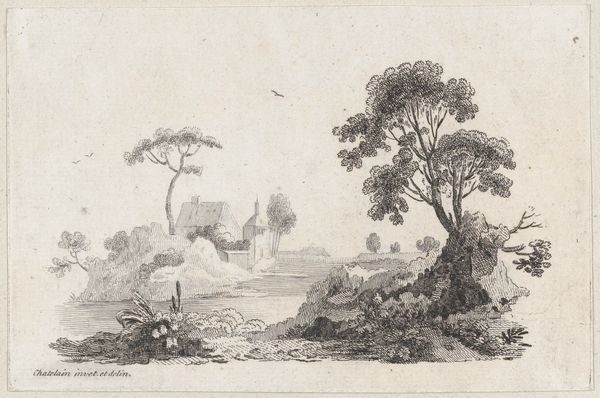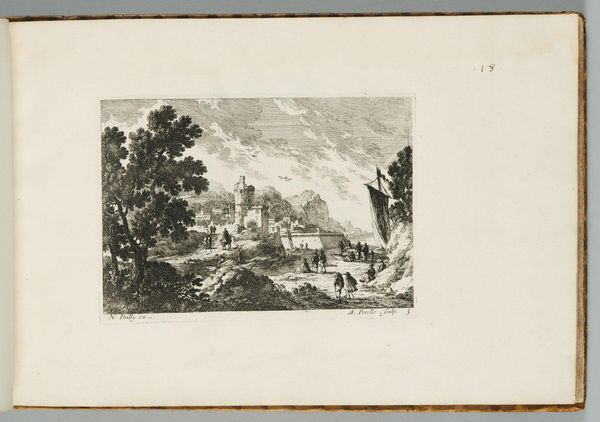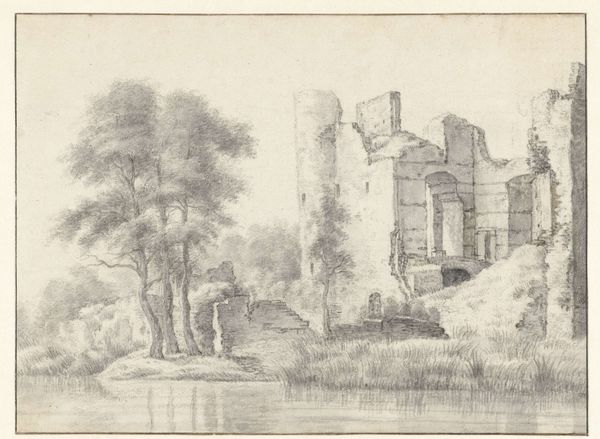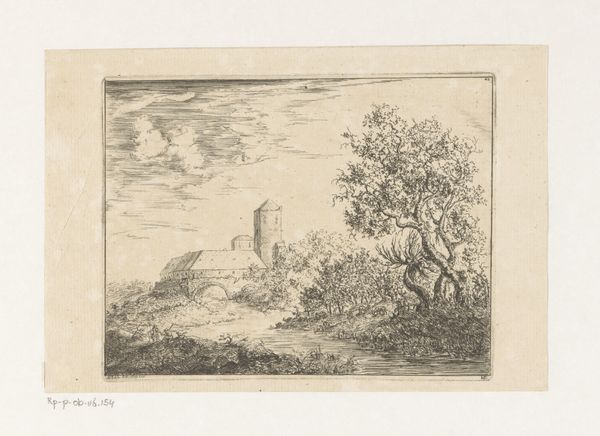
Landschap met twee rustende figuren onder een boom, een ruïne op de achtergrond 1725 - 1763
0:00
0:00
print, engraving
#
baroque
# print
#
landscape
#
line
#
cityscape
#
engraving
Dimensions: height 68 mm, width 83 mm
Copyright: Rijks Museum: Open Domain
Curator: Looking at this engraving, "Landscape with two resting figures under a tree, a ruin in the background," created by Quentin Pierre Chedel between 1725 and 1763, currently residing in the Rijksmuseum... my initial thought is tranquility. It evokes a certain peacefulness, despite the ruinous landscape. What are your thoughts? Editor: There’s an elegant formality to it, a constructed artificiality, typical of the Baroque aesthetic. The composition feels very deliberate—the positioning of the figures, the tree acting as a focal point… everything is placed with a distinct sense of order and refinement. The limited line work of the engraving, that rigid frame and use of light, almost create this hyper-artificial Arcadia. Curator: Yes, but consider the broader context: prints like this democratized access to landscapes. They circulated widely, bringing images of both idealized and real places into people's homes, sparking curiosity and desire for travel. How do we see this piece reflecting the values of production and consumerism of that time? Editor: From a formalist perspective, the engraving technique itself—the way Chedel manipulates line and space to create texture and depth—is significant. Consider the structural elements – how the tree on the left is juxtaposed against the ruins in the distance. Semiotically, the ruins might be interpreted as a symbol of the past, contrasting with the vibrant present symbolized by the resting figures. It’s a carefully calibrated dance of visual motifs. Curator: But also, an idealized lifestyle of wealthy land owners. Where would an engraver like Chedel have been without their patronage? They helped manufacture such beautiful images, not just for beauty, but for bolstering their patrons’ position in society. Editor: Well, whether that landscape existed or not, there's also a tangible, textural element—the density of the linework indicating shadow, light playing across the dilapidated structure and contrasting with the delicate leaf work. The materials and artistry serve the vision, a testament to craftsmanship and its role in bringing artistic concepts to life. Curator: Absolutely, by investigating the materials, and context, the historical importance of Chedel's print allows us to have deeper insights into this visual construction as an art commodity, while highlighting how prints acted as conduits connecting lived reality, social classes, artistic creation, and the economy. Editor: Indeed, looking closer has only heightened my appreciation for how this seemingly simple image balances form and context. There’s real artistic intent in every mark.
Comments
No comments
Be the first to comment and join the conversation on the ultimate creative platform.
